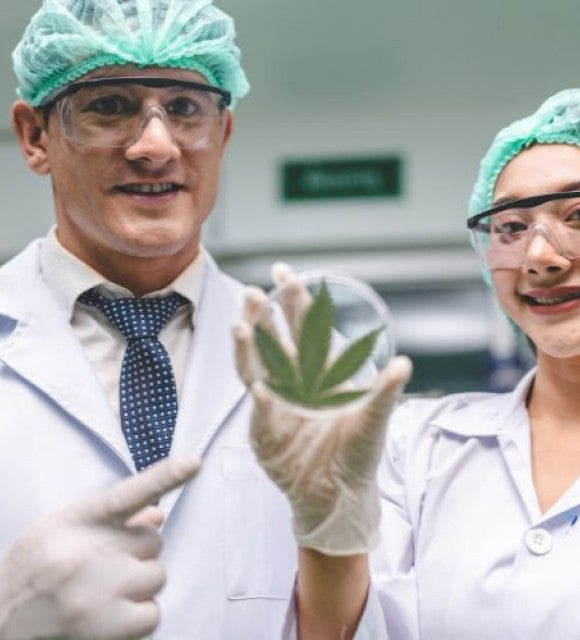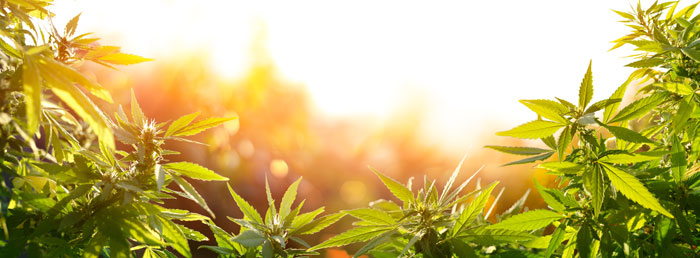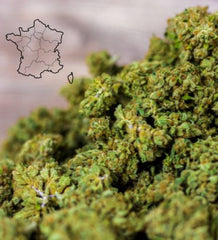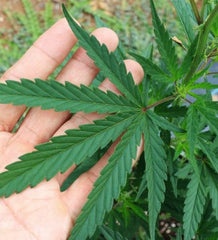
Learn all about CB9, the cannabinoid newly isolated from cannabis!
What exactly is CB9?
CB9, sometimes referred to as Cannabinoid 9 (especially in the United States), is a cannabinoid found naturally in the cannabis plant, particularly the Cannabis L. Sativa and Cannabis Indica strains. This distillate has a rather unique molecular structure, halfway between CBD and THC.
If we were to make a comparison with the cannabinoids we already know, CB9 could be the cousin of HHC, this controversial cannabinoid that was banned by the Ministry of Health in 2023 under the impetus of the National Agency for the Safety of Medicines and Health Products.
CB9 is a product of nature, not of laboratories. Indeed, no in vitro chemical manipulation is required to obtain it, since it occurs naturally in the cannabis plant, presumably as a result of a cascade of chemical reactions with CBD and THC as precursors and under very specific temperature and humidity conditions, which science is barely exploring.
What makes CB9 different from other known cannabinoids?
In reality, the molecular structure of the 140 cannabinoids discovered so far by the scientific community is relatively similar, with some small differences on the side chains that impact:
- The degree of affinity with the “CB 1” and “CB 2” receptors of the endocannabinoid system (ECS);
- The dominant effect: soothing, energizing, anti-inflammatory, antioxidant, pain-relieving, anti-nausea, etc.;
- The presence or absence of psychotropic effects (or “high” effect);
- The intensity of psychotropic effects, if any;
- Taste and organoleptic properties.
Similar structures = comparable effects
Obviously, with molecular structures that are 70 or 80% similar, all cannabinoids have fairly comparable effects, with a soothing and relaxing action , fairly marked anti-inflammatory properties, an antioxidant action and analgesic (pain-relieving) properties.
Even THC, the molecule responsible for the intoxicating and psychotropic effects of cannabis, is not without its benefits. This is why some countries (particularly France) have authorized certain medications containing THC.
And what about CB9? We're still in the same spectrum of effects, with a cannabinoid that's soothing, anti-inflammatory, and pain-relieving... but psychotropic, at least to a certain degree. Nothing new under the sun there.
CB9, a cannabinoid that does not crystallize
But this mysterious cannabinoid has a rare property in the cannabinoid universe: it doesn't crystallize, meaning it doesn't form crystals and remains in a liquid or viscous state regardless of storage or transportation conditions. Here's what that means:
- CB9 integrates very easily with other compounds, without major chemical risks. Manufacturers will be able to easily create low-cost CB9 oils, topicals, e-liquids, and edibles;
- CB9 does not require additives or anti-crystallizing agents, which will favor pure and fairly refined products... if it is ever legalized (unlikely in France);
- Healthcare professionals who wish to experiment with CB9 drugs, particularly for the management of pain that is resistant to conventional treatments, will find it relatively easy to handle and store this resistant molecule.

What do consumers who may have consumed CB9 say?
CB9 is mostly available in the American and Japanese underground markets, according to reports from hemp users on Reddit.
Initial feedback from the field on CB9 indicates that this natural cannabinoid has moderately psychotropic properties, much like HGH, accompanied by relaxing and calming effects, like all known cannabinoids.
Unlike THC, which can sometimes cause intense euphoria followed by episodes of anxiety in the event of an overdose, CB9 appears to be limited to a measured psychotropic effect without a sharp peak or "crash." However, this is still a psychotropic molecule that will likely be banned by lawmakers as soon as it crosses national borders.
CB9 vs. CBD vs. THC: Let's compare these three cannabinoids!
CB9, therefore, falls somewhere between CBD and THC. It appears to have most of the properties of cannabinoids, albeit with a moderate psychotropic effect that makes its legalization highly unlikely, at least in France. Here's a comparison chart of CB9, CBD, and THC:
|
CB9 |
CBD |
THC |
|
|
Abundance in the cannabis plant |
+ |
++ |
+++ |
|
How is it produced? |
From CBD and THC, within the cannabis plant |
Extracted from the cannabis plant using solvents or supercritical CO2 |
Similar to CBD |
|
Psychoactive effects |
++ |
No |
+++ |
|
What interactions with the endocannabinoid system? |
Unknown for now |
Weak modulation of CB1 and CB2 receptors |
Strong affinity with the “CB 1” receptor, which makes it psychoactive |
|
What are the benefits? |
According to consumer feedback: pain relief, anti-inflammatory action, soothing and anti-stress action |
Painkiller Anti-inflammatory Anti-stress Anti-anxiety Antioxidant Regulates sleep |
Pain relief, sedation |
|
What products contain this cannabinoid? |
Distillate, flowers, hash, gums |
Oils , capsules, flowers, resin, food, e-liquids, creams, etc. |
Flowers, concentrates, foods, oils… |
|
Legality in France |
No mention in the law in France The molecule will probably be banned as soon as it arrives in France because of its psychotropic effects. |
Legal, provided the CBD product has less than 0.3% THC |
Illegal, due to its marked psychotropic effect |






